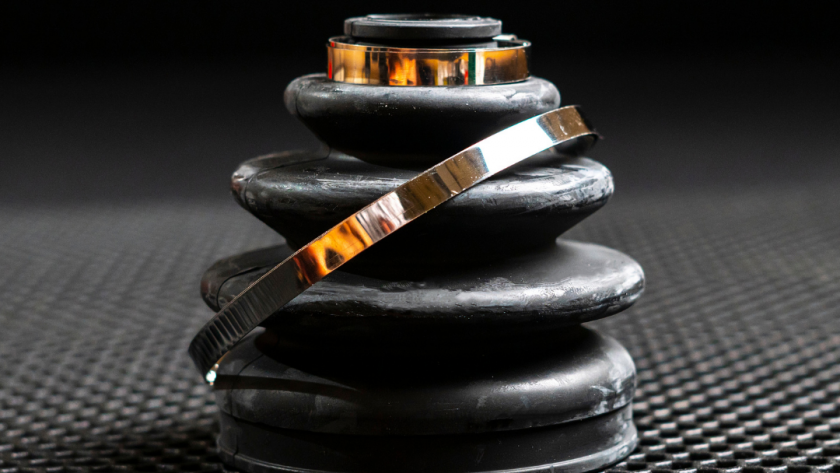Many different sorts of faults and maintenance concerns might occur in your car. Knowing how to precisely and quickly detect these issues will save you money on repair costs. To avoid costly repair expenditures and to keep your car operating smoothly and safely, look for indicators of a faulty drive shaft.
What is a driveshaft?
A drive shaft is a rod-like component that delivers torque from the engine to the wheels of your car. It’s basically the shaft that propels your car forward. The driveshaft transfers torque between driveline components at various angles. Because drivetrain axles bounce up and down and shift laterally with braking and acceleration, it’s critical that the shaft assembly is flexible. The propeller shaft, universal joints, slip splines, and yokes make up the driveshaft assembly.
How does driveshaft work?
Front-wheel drive cars do not have drive shafts, which is vital to remember. A transaxle is a single unit that combines the gearbox and axle. The transmission and axle, on the other hand, are independent parts in four-wheel and rear-wheel drive vehicles. As a result, the driveshaft is used to transport the transmission’s turning action to the axle.
This tubular component is commonly composed of aluminum, steel, or carbon fiber to guarantee that it is both sturdy and lightweight.
Signs of a Problematic Driveshaft:
It’s worth noting that the driveshaft seldom breaks on its own. However, it will ultimately show symptoms of failure owing to excessive tension and corrosion.
Under vehicle vibration:
The most prevalent signs of a malfunctioning driveshaft are vibrations and shaking. Excessive driveshaft vibration might be caused by worn bushings or U-joints. This might potentially be caused by the driveshaft not being correctly fastened down or the unit being out of balance. Vibrations from a vibrating driveshaft can cause other drivetrain components to wear out.
Vibrations can be caused by a variety of malfunctioning components, including:
- Universal Joints (U-Joints)
- Couplers
- Bearings for Carrier
Noises:
Another sign of a worn drive shaft is unusual sounds. The capacity of the driveshaft to spin normally is harmed if the bearings and bushings that support the driveshaft and U-joints fail or get worn. Scraping, squeaking, clanking, and rattling sounds will be heard when this happens.
The earlier you can pinpoint the source of the noise, the easier it will be to resolve the issue. The longer the U-joint is allowed to deteriorate, the more costly the repairs will become. If the problem is caught early enough and the U-joint is still in good form, all it takes is a little oil to silence the noise.
Shuddering when accelerate:
When you accelerate, loose U-joints or faulty center bearings in the driveshaft might generate a worrying trembling. This might also be accompanied by strange noises. Take your car or truck in to get the driveshaft examined if it seems like it’s failing or trembling when you hit the gas pedal.
Turning problems:
If you’re having trouble turning, it’s quite likely that your driveshaft is worn. A broken driveshaft makes it difficult to move the wheels properly, reducing your control of the vehicle.
Keep your driveshaft regularly greased to guarantee that it is always in good operating order. The driveshaft and its components might be damaged by a lack of lubrication. High-use driveshafts should be examined on a regular basis since excessive movement might cause them to wear prematurely.
U-joint problem:
A typical driveshaft issue is worn or damaged U-joints. You can frequently inspect the U-joints yourself if you know where to look. Simply put the vehicle in park, then into neutral, and then back and forth using the U-joint yokes. If there is a lot of movement, it’s time to replace it. While you’re at it, look for noticeable corrosion on bearing cap seals, which might indicate an issue with the driveshaft.
Final thoughts:
You must get your drive shaft serviced as soon as you notice problems with it to enjoy your precision driveline. Your vehicle’s drive shaft is what permits it to move, and if it breaks, it will be rendered worthless at best and potentially deadly at worst. Find out where you can get automobile drive shaft components to repair those that are too damaged to operate properly.




It’s great that you pointed out how unusual sounds is a sign of a worn drive shaft. I was driving to my friend’s house the other day and I heard some weird sounds coming from the car. I suspect that the sound may be coming from the driveshaft, so I should probably bring the car to a driveshaft repair shop later.